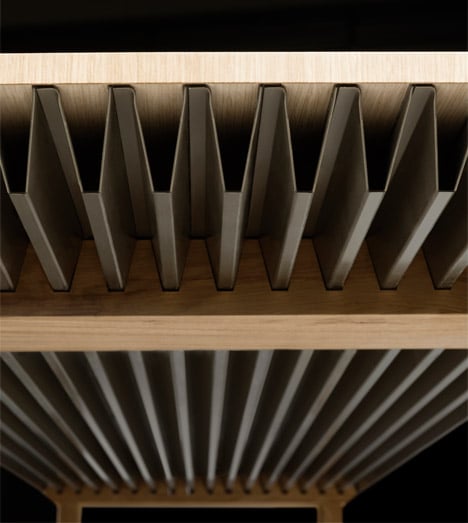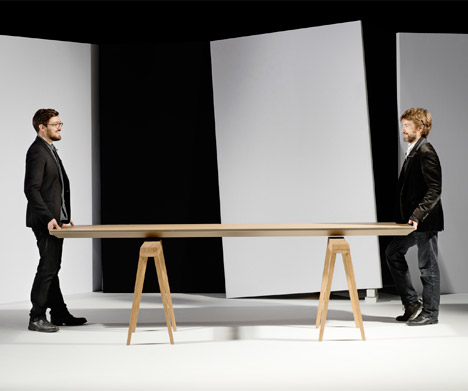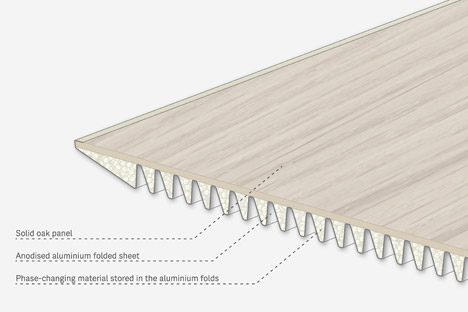Zero Energy Furniture stores heat to regulate room temperature
Milan 2015: this table by designers Raphaël Ménard and Jean-Sébastien Lagrange absorbs and releases thermal energy depending on the temperature of the room.
The first design in Ménard and Lagrange's Zero Energy Furniture range is a table with a solid-oak top, a corrugated anodised aluminium underside and oak trellis-style legs.

It is designed to absorb excess heat when the temperature in the room exceeds 22 degrees Celsius. It also releases the heat back into the space when the temperature drops below 22 degrees, working like thermostat-controlled heating.
Phase Change Material (PCM) wax located between the wooden surface and the aluminium underside melts at 22 degrees, absorbing heat from the surrounding air. As the temperature drops, the wax solidifies and releases the heat back into the room.

"PCM wax was actually developed in the fields of building and construction, so Raphaël was aware of this technology through his work as both architect and engineer," Lagrange told Dezeen. "The material is able to store a large quantity of thermal energy within a small volume."
Aluminium is a good thermal conductor and its corrugated form increases its surface area, encouraging thermal exchange between the room and the PCM material inside. The folds also provide structural rigidity.

"The idea was to use this folded aluminium sheet for its conductivity as well as well as for its structural property," said the designer. "That's why we wanted to have a simple work surface supported by two trestle legs. Thanks to the stiffness of the panel we can have an important width between the bearing points."
The solid oak used for the tabletop was chosen for both its aesthetic and its thermal properties. "It is a good insulating material, so the thermic exchange is efficient on the side of the aluminium structure – and it is more comfortable when you sit at the table," said Lagrange.

The table is the first product in the Zero Energy Furniture series, which was presented during Milan design week last month.
"This technology could be very efficient in open-plan working spaces, meeting rooms, classrooms, as well as restaurants, so we would like to make some variations which could be adapted to such contexts," Lagrange said.